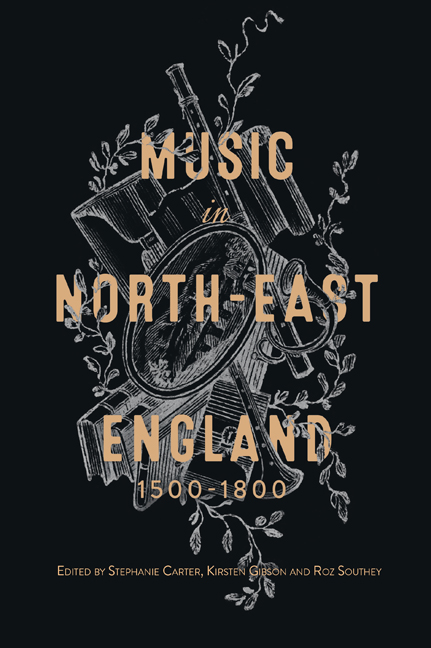Introduction
Published online by Cambridge University Press: 17 November 2020
Summary
This collection of fourteen essays grows out of a study day held in Newcastle upon Tyne in October 2014, which sought to develop a nationwide account of musical culture beyond the metropolis in early modern England. The dominant historiography of early British music studies has focused on the most fully documented contexts of London and what might be described as its satellite environments, those contexts most closely aligned – culturally, intellectually or economically – with metropolitan culture: the court, the universities, the country estates of the gentry and aristocracy, and cosmopolitan centres of leisure and recreation. Since the dawn of the twenty-first century, however, there has been a turn within historical musicology towards developing a genuinely national narrative of British musical culture that, while not excluding the well-trodden contexts of London and its satellite environs, also looks beyond them. A scattering of articles in the first half of the twentieth century laid the foundations for such work, while Stanley Sadie's 1958–59 article ‘Concert Life in Eighteenth-Century England’ was one of the earliest to explore the development of public concerts outside London. In recent years, the pace of study has accelerated. Studies at the forefront of this development have covered a broad geographical area – some focused on Britain as a whole, others on specific cities, regions or nations – and a wider span of time, from the Renaissance to the early twentieth century, though the centre of gravity for much of this work has been the eighteenth century. A primary concern of such studies, building on Sadie's work, has been the nationwide development of public concerts, but scholars have also researched civic music making, institutions, regionally based musicians and recreational music making in these broader geographical contexts.
Music in North-East England, 1500–1800 adds to this growing body of work, exploring musical life in England's northernmost region from the Middle Ages to the beginning of the nineteenth century. The collection is organized into four discrete sections: ‘Centres of Musical Activity’, ‘Sources’, ‘Recreation and Education’ and ‘Print and Popular Song’. Each section ranges geographically and chronologically but is tied together by a thematic core. ‘Centres of Musical Activity’ comprises five chapters that provide case studies of musical life in Beverley, Newcastle upon Tyne, Durham and Doncaster from the Middle Ages to the turn of the nineteenth century.
- Type
- Chapter
- Information
- Music in North-East England, 1500–1800 , pp. 1 - 10Publisher: Boydell & BrewerPrint publication year: 2020

